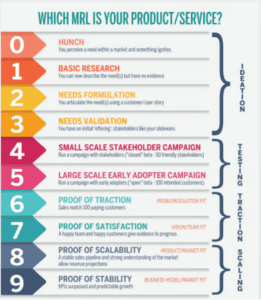What is BRL?
In today’s rapidly evolving business environment, organisations are often faced with the need to implement significant changes, projects or initiatives to remain competitive and adapt to market dynamics. However, rushing into these activities without considering the business readiness of the enterprise can lead to costly mistakes and non-optimal results. This is where business readiness levels (BRLs) come into play. The BRLs provide a structured framework for assessing an organisation’s business readiness, enabling businesses to make informed decisions and increase the chances of successfully implementing change.
Understanding business readiness levels:
Business Readiness Levels (BRLs) take their essence from the well-established concept of Technology Readiness Levels (TRLs) used in engineering and technology development. However, BRLs specifically focus on assessing the readiness of a business, rather than the technological aspects.
BRLs are usually formulated as a series of pre-defined levels or grades that assess different aspects of business readiness within an organization. These levels are designed to assess an organisation’s business readiness in terms of processes, resources, capabilities, stakeholder engagement, risk management and change management.
BRL grades range from grade 1 to grade 9, where 9 is the highest level of technology maturity:

Source: https://www.strata.team/what-trl-and-brl-is-needed-for-the-eic-accelerator-what-about-eurostars/
Level 0
(“Hunch” – you perceive a need within the market and then take action):
In this embryonic stage, entrepreneurs recognize a potential gap or need in the market. It starts with an intuitive hunch, a spark of inspiration that motivates further exploration.
Level 1
(Basic Exploration – You can describe the need(s) but have no evidence):
Entrepreneurs conduct basic research to further explore an identified need. Although evidence may be lacking at this stage, they are able to articulate the problem statement and define the basic requirements.
Level 2
(Needs Formulation – you formulate the need(s) using a customer/user story):
Based on insights gained from basic research, entrepreneurs create customer or user stories that illustrate pain points and desired solutions. This level helps to refine the understanding of the target audience and their specific needs.
Level 3
(Needs validation – You have an initial “offer”: stakeholders like your slideware):
In this stage, entrepreneurs create a prototype or initial offer to demonstrate the value of the offering. Stakeholders, such as investors or potential partners, provide positive feedback and show interest in the concept.
Level 4
(Small scale stakeholder campaign – launch campaign with first interested ‘closed’ beta stakeholders – 50 friendly stakeholders):
Entrepreneurs initiate a small-scale campaign targeting early adopters who are willing to provide feedback and engage in a “closed” beta testing phase. This level allows for iterative improvements and validates the concept within a limited, interested user base.
Level 5
(Large campaign for first customers – run a campaign with the first potential customers “open” beta – 100 planned customers):
Building on the previous level, entrepreneurs run a broader campaign with their first users. This “open” beta testing phase includes a larger group of intended customers, allowing for greater feedback and market validation.
Level 6
(Demonstration of impact – sales equivalent to 100 paying customers):
At this level, the business will demonstrate the ability to acquire 100 paying customers. Sales and revenue generation confirm that the product or service effectively solves the identified problem, thereby achieving a match between the problem and the solution.
Level 7
(Evidence of achievement – a happy team and happy customers provide evidence of progress):
Entrepreneurs focus on ensuring customer satisfaction and fostering a positive team culture. Feedback from customers and team members indicates that the product/service is aligned with the intended value proposition and is well supported by an engaged team.
Level 8
(Demonstration of scalability – A stable sales channel and a good understanding of the market enable revenue forecasts):
Entrepreneurs establish a stable sales channel and thoroughly understand the target market. They can confidently forecast revenue growth based on product production capacity and market demand, indicating a scalable business model.
Level 9
(Evidence of stability – KPIs exceeded and growth predictable):
At the top of the BRL, entrepreneurs achieve stability and predictable growth. Key Performance Indicators (KPIs) consistently outperform expectations, signaling strong alignment between the business model and the target market.
Conclusion:
Business readiness levels provide a roadmap for entrepreneurs to navigate the challenging journey from idea to market adaptation. From initial hunch to achieving stability and predictable growth, each level represents a critical milestone in validating the business concept and ensuring that the business is ready for success. By adopting the BRL framework, entrepreneurs can assess their progress, make informed decisions, and steer their businesses toward sustainable growth and market relevance.

